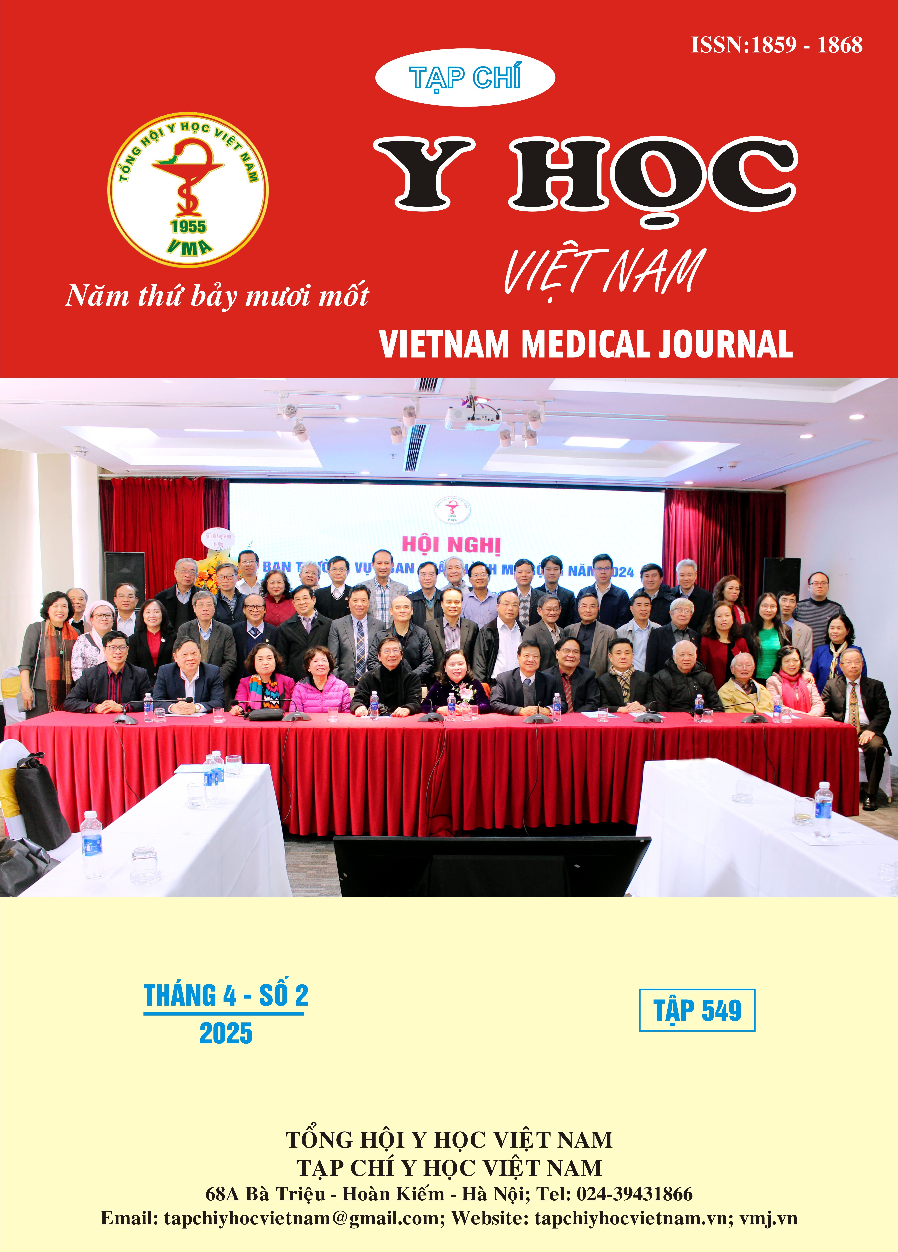CHARACTERISTICS OF PATIENTS WITH MULTIPLE MYELOMA AT THE NATIONAL INSTITUTE OF HEMATOLOGY AND BLOOD TRANSFUSION IN THE PERIOD 2019-2023
Main Article Content
Abstract
Objective: To describe the clinical presentations and workups of newly diagnosed multiple myeloma patients in the period 2019-2023. Subjects and method: A total of 711 patients newly diagnosed with multiple myeloma were treated at the National Institute of Hematology and Blood Transfusion from January 2019 to June 2023. Results: In this study, the most commonly affected age group for multiple myeloma was 51–70 years (65.68%). Fewer number of male than female (male/female = 0.83:1). The IgG subtype was the most common, with IgG-K and IgG-L accounting for 38% and 23.3% of cases, respectively. Elevated total protein, decreased albumin, and increased B2M levels were noted in 70% of patients. The most frequent genetic abnormality was dup(1q) (49.1%), followed by del(13q) (39.7%), with t(14;16) being the least common at 2.5%. Notably, 73.9% of patients presented with two or more genetic abnormalities, and one patient exhibited all six genetic variations. Kidney failure was observed in 33.8% of patients at diagnosis, with a significantly higher prevalence in those with light chain disease (Kappa 56%, Lambda 38%) compared to IgA (32.3%) and IgG (31%) subtypes (p = 0.002).
Article Details
Keywords
Multiple myeloma, clinical features, paraclinical features, newly diagnosed multiple myeloma, multiple myeloma
References
2. Myeloma statistics. Cancer Research UK, (2015) , accessed: 11/13/2023.
3. Review of 1027 Patients With Newly Diagnosed Multiple Myeloma - Mayo Clinic Proceedings. , accessed: 11/12/2023.
4. Bagratuni T., Kastritis E., Politou M., et al. (2013). Clinical and genetic factors associated with venous thromboembolism in myeloma patients treated with lenalidomide-based regimens. Am J Hematol, 88(9), 765–770.
5. Sverrisdóttir I.S., Rögnvaldsson S., Thorsteinsdottir S., et al. (2021). Comorbidities in multiple myeloma and implications on survival: A population-based study. Eur J Haematol, 106(6), 774–782.
6. Gogia A., Sikka M., Sharma S., et al. (2018). Hemostatic Abnormalities in Multiple Myeloma Patients. Asian Pac J Cancer Prev APJCP, 19(1), 127–130.
7. Pan P. and Liu J. (2022). Analysis of Coagulation Abnormality in Patients with Multiple Myeloma and Its Clinical Significance. Evid-Based Complement Altern Med ECAM, 2022, 5120967.
8. Kundu S., Jha S.B., Rivera A.P., et al. Multiple Myeloma and Renal Failure: Mechanisms, Diagnosis, and Management. Cureus, 14(2), e22585.
9. Bladé J., Fernández-Llama P., Bosch F., et al. (1998). Renal Failure in Multiple Myeloma: Presenting Features and Predictors of Outcome in 94 Patients From a Single Institution. Arch Intern Med, 158(17), 1889–1893.
10. Rokicka-Piotrowicz M., Paszkowska M., Król M., et al. (2000). [Analysis of causes for anemia in patients with multiple myeloma]. Pol Arch Med Wewn, 104(6), 843–851.


